Type Light rail/Tram Services 2 | System New Jersey Transit Website NJ Transit | |
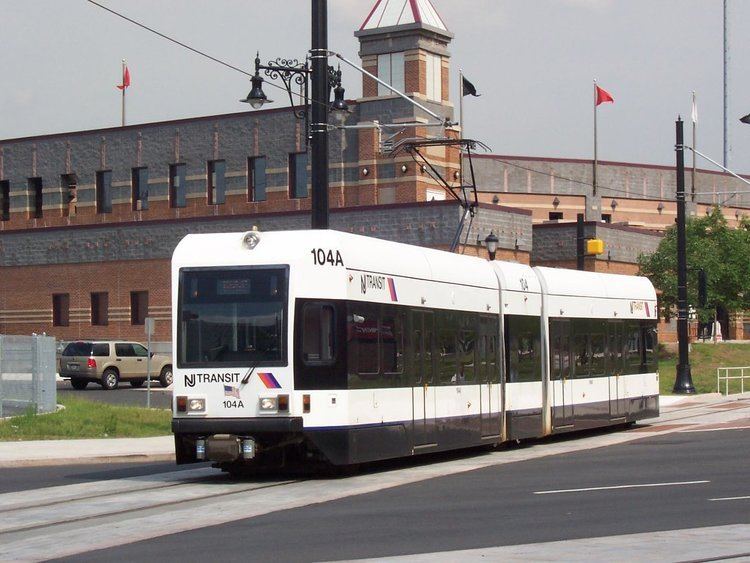 | ||
Stations 5 (Broad Street Extension outbound)4 (Broad Street Extension inbound)11 (City Subway Line) Opened May 16, 1935 (City Subway)2006 (Broad Street Extension) Terminis Pennsylvania Station, Grove Street (City Subway Line), Newark Broad Street Station (Broad Street Extension) | ||
new jersey transit newark light rail to broad street return trip full ride
The Newark Light Rail (NLR) is a light rail system under New Jersey Transit Bus Operations serving Newark, New Jersey. The service consists of two segments, the original Newark City Subway (NCS), and the extension to Broad Street station. The combined service was officially inaugurated on July 17, 2006.
Contents
- new jersey transit newark light rail to broad street return trip full ride
- New jersey transit newark light rail kinki sharyo 1 car lrv train newark penn station
- Newark City Subway
- History
- Bloomfield extension
- Shared track operation
- Broad Street Extension
- Fares
- Rolling stock
- Historic dates
- Accidents
- In popular culture
- References
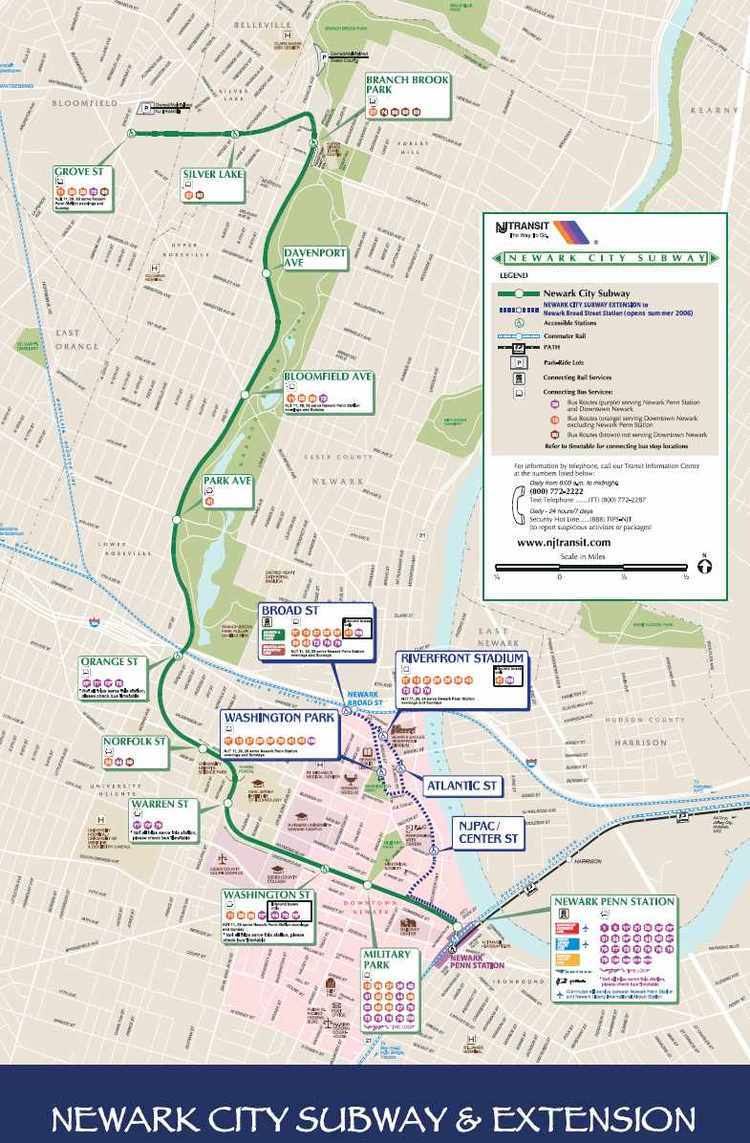
New jersey transit newark light rail kinki sharyo 1 car lrv train newark penn station
Newark City Subway
The Newark City Subway service is the longer and older of the two segments. The line is a "subway-surface" light rail line which runs underground downtown and above-ground in outlying areas. Before becoming a part of the Newark Light Rail service, it was also known as the #7-City Subway line, an NJT Bus Operations route number that still applies internally (during system closures, buses would also bear the number "7 City Subway").
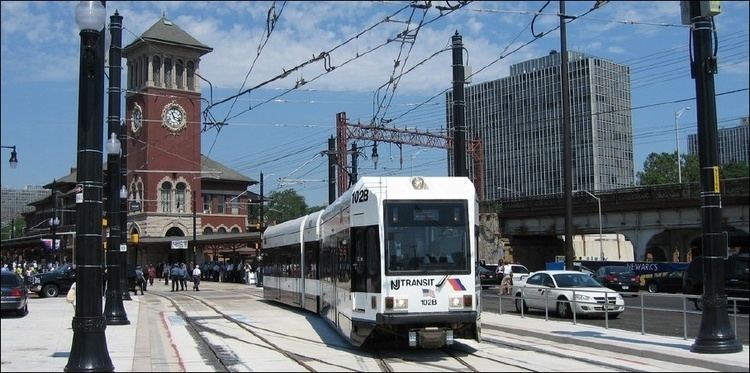
The segment is 5.3 mi (8.5 km) long and runs between Grove Street in Bloomfield and Newark Penn Station. Penn Station is a major transportation hub with connections to the PATH rapid transit system to Manhattan, multiple bus routes, and Amtrak.
History
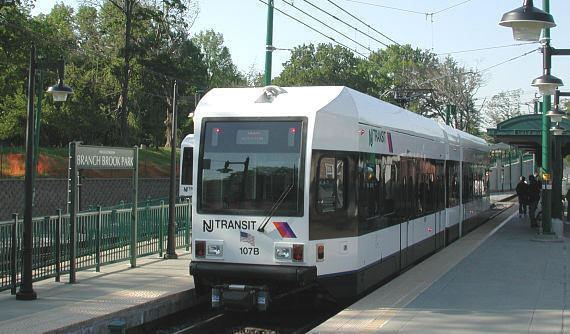
The line opened in 1935 along the old Morris Canal right-of-way, from Broad Street (now known as Military Park) to Heller Parkway. Works Progress Administration artists decorated the underground stations with art-deco scenes from life on the defunct Morris Canal. The southernmost part, south of Warren Street, was capped with a new road, known as Raymond Boulevard. Only one grade crossing was present on the original subway; the line crosses Orange Street at grade so it can pass over the below-grade Delaware, Lackawanna and Western Railroad (now NJT Morristown Line) immediately to the north.

Operation of the complete subway to the planned terminal at Penn Station was delayed until the new Pennsylvania Railroad station above was completed in 1937. The terminal has five tracks, two incoming and three outgoing, connected by two loop tracks. This part of the subway included a grade-separated junction with a connection to the lower level of the Newark Public Service Terminal that was used for only a few months (June to September).

An extension to a wooden station at North 6th Street or Franklin Avenue was opened in 1940, located north of the present Branch Brook Park station. In 1953 the line was cut back about one block to accommodate construction of a turning loop, and a new station, still called Franklin Avenue, was opened adjacent to Anthony Street. The station was enlarged in 2002 and renamed Branch Brook Park.

The subway was operated by the Public Service Coordinated Transport as its No. 7 line. Other streetcar routes used parts of the subway, reaching street trackage at the locations shown below, ending as each route was closed and replaced by bus service:
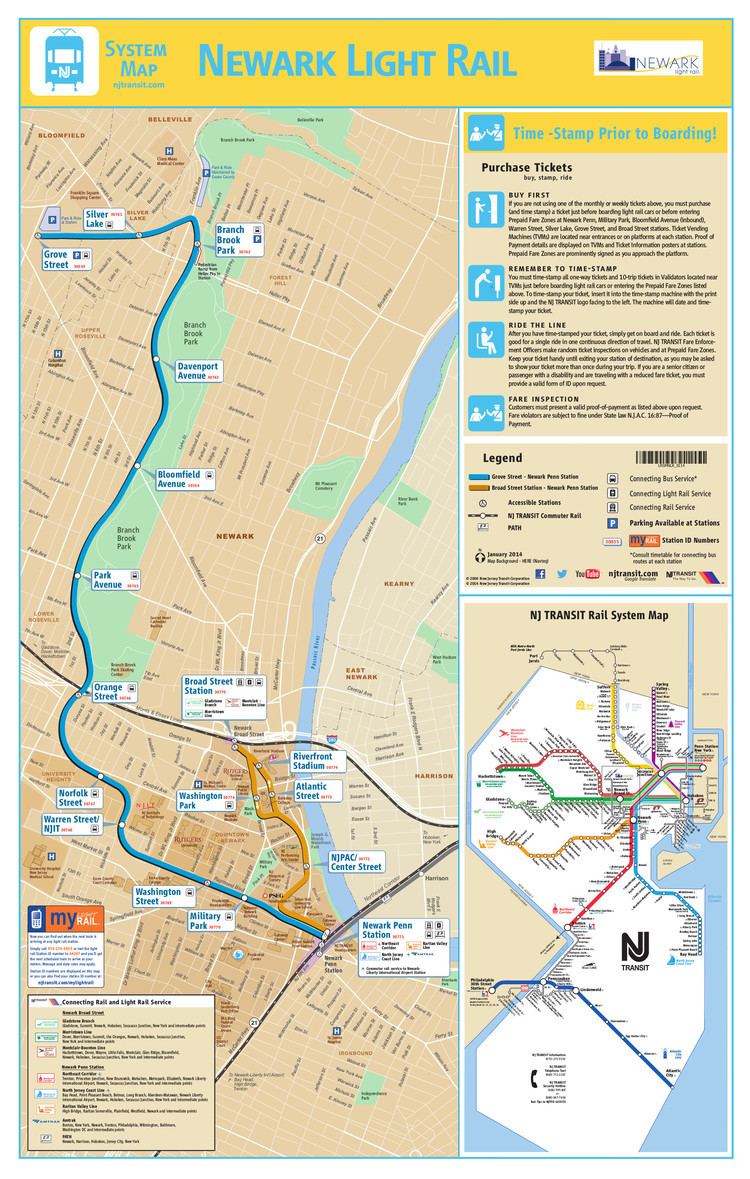
Until June 5, 1952, the Roseville Car House, on the south side of Main Street (on the No. 21 line) near the eastern city line of East Orange, was used for the No. 7 line. From that time until 2002, Newark Penn Station was used for storage and maintenance. A new shops and yard complex opened at the end of the extension to Grove Street.
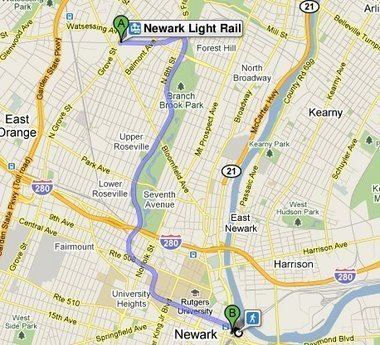
Starting in January 1954, 30 PCC streetcars bought from Twin City Rapid Transit provided all service on the route. They were single-ended, requiring construction of a new turning loop at the Franklin Avenue terminal. The cars had been built 1946–1949 by the St. Louis Car Company and were sold by TCRT when that system went through a conversion to buses. Four cars were scrapped over the years, and two were sold to Shaker Heights Rapid Transit in 1978.
In 2001, new light rail cars built by Kinki Sharyo in Japan in 1999 replaced the PCCs. The last day of PCC service was August 24, 2001.
New Jersey Transit took over operations in 1980.
Some of the PCCs are stored in the Newark City Subway shop. Eleven were sold in 2004 to the San Francisco Municipal Railway for use on its F Market heritage streetcar line. One PCC, #15, was delivered to the Connecticut Trolley Museum in 2013 for restoration and display. One of the Shaker Heights cars has been restored by the Minnesota Transportation Museum, which operates it on a short stretch of track in western Minneapolis.
In 2005, eight PCCs were given to the City of Bayonne to be rehabilitated and operated along a proposed 2.5-mile (4 km) loop to serve the Peninsula at Bayonne Harbor, formerly Military Ocean Terminal at Bayonne (MOTBY). The proposed line would be connected to the 34th Street station of the Hudson-Bergen Light Rail.
On September 4, 2004, Broad Street Station was renamed Military Park Station, to avoid confusion with the terminal of the new route to Newark Broad Street Station.
Bloomfield extension
On June 22, 2002, the Newark City Subway was extended to the suburbs of Belleville and Bloomfield along what had been the former Erie Railroad Orange Branch, now under Norfolk Southern ownership. New stations were opened at Silver Lake and Grove Street, and the Heller Parkway and Franklin Avenue stations were combined into a new Branch Brook Park station. The loop at Franklin Avenue was removed, since the new vehicles are bidirectional, unlike the old PCCs—a new loop, however, is in place at the Grove Street facility. All the street crossings on the extension are at-grade.
Shared-track operation
The original agreement gave sole operating privileges to Norfolk Southern between 11 pm and 5 am daily, but a new agreement allows passenger service to operate at all hours, with late-night service commencing on January 8, 2005. In exchange, Norfolk Southern can now operate during all off-peak hours, when passenger trains are infrequent.
Broad Street Extension
The Broad Street Extension is the second segment of the Newark Light Rail. It was planned as the first phase of the Newark-Elizabeth Rail Link. The line is one mile (1.6 km) long and connects Newark Penn Station to Broad Street Station. It branches off the older City Subway using the existing junction that had led to the Public Service terminal. A new tunnel leads from the junction to a portal about two blocks north. The remaining section runs above-ground. For a few blocks the two tracks run in different streets a block apart. One stop serves the New Jersey Performing Arts Center and another served the Bears and Eagles Riverfront Stadium. The extension opened on July 17, 2006.
Construction began in 2002 with an estimated cost of $207.7 million, or about $40,000 per foot of track; it was completed within budget. Projections were for 4,000 average weekday boardings after one year, growing to about 7,000 in 2010. Actual weekday boardings in 2010 for both Newark Light Rail lines combined were reported at 9,000.
The art work at the new stations has a common theme, "Riding with Sarah and Wayne." It is intended as a tribute to Newark's native daughter Sarah Vaughan and includes the lyrics to her signature song, "Send in the Clowns," and colored bricks representing the music notes.
Fares
The Newark Light Rail is equivalent to a one-zone bus ride, with the one-zone fare at $1.60 (as of October 1, 2015), and is valid for one hour on the entire system from the time the ticket is validated. A special $0.75 "Underground" fare is available for trips that use only the subway between Warren Street and Penn Station and not the surface portion. Through-ticketing is available for connecting bus routes. Monthly and weekly NJ Transit bus and rail passes valid for one or more local bus zones are accepted.
The Newark Light Rail, like most light rail systems in the United States, operates on a proof-of-payment system, in which riders must present their tickets upon request during random fare inspections. Passengers purchase tickets at ticket vending machines (TVMs). One-way and ten-trip tickets must be validated at automated validators located near the TVMs, which stamps the date and time on the ticket for 60 minutes of use. New Jersey Transit's fare inspectors perform random ticket inspections on vehicles and at stations. Fare evasions or passengers who fail to validate carry a fine of up to $100, and repeat offender are subject to criminal theft of service charges. On the PCC streetcars, cash fares (exact fare) were paid on board via farebox, except for a brief period starting in October 1999 prior to the introduction of LRVs, when proof-of-payment fare collection was instituted.
Broad Street Extension
On weekdays, service operates separately between the two sections. On weekends, service operates jointly.
Rolling stock
The Newark Light Rail system uses a new-model vehicle built by Kinki Sharyo of Japan. This vehicle, the same one used by the HBLR system, is a double-articulated vehicle with three sections. Each of the two end sections has an operator's cab at the far end, thus eliminating the need for the vehicle to turn itself around physically in order to reverse direction. Each end section also has seating for 16 passengers on an upper level, and seating for 13 passengers on the lower level, including one special fold-down seat next to an empty space that a passenger using a wheelchair may use. With these two sections, and a middle section that seats ten passengers (five on each side), the vehicle can comfortably accommodate 68 seated passengers and two wheelchairs. An additional 122 passengers could stand in the vehicle, if necessary. Vehicles can be coupled into two-unit sets. A contract to expand 10 of the 20 LRVs assigned to the Newark Light Rail system for the purpose of increasing passenger capacity was approved on July 9, 2014.
The Seashore Trolley Museum in Kennebunkport, ME acquired PCC #5 in 2011. The car represents the first piece of NJT rolling stock in the museum's collection. The car is currently undergoing restoration and rehabilitation work so that it may operate on the museum's 1 1/2 mile demonstration railway. Car #5 joins the museum's already-extensive collection of PCC cars from numerous cities, including Boston, Pittsburgh, Dallas, San Francisco, Philadelphia, Washington, D.C., and Kansas CIty.
Historic dates
Accidents
The Newark City Subway has had a few accidents over the years:
